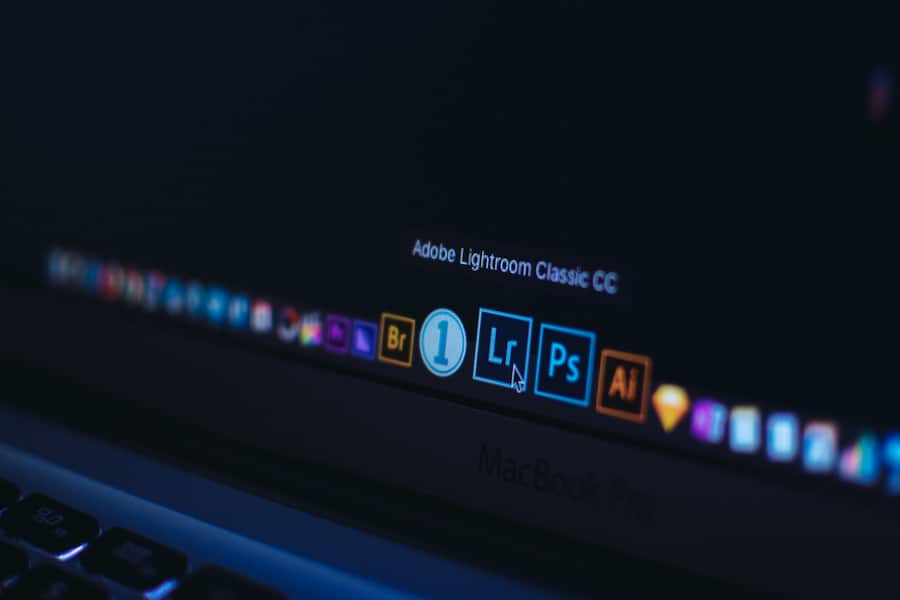
As an Amazon Associate we earn from qualifying purchases.
Adobe Lightroom is a high-end post-production and image organization software that you can use to improve the management and quality of your real estate photos. The in-depth examination of Lightroom 4 vs 6 features will help you determine which version will suit your computer specs and
Quick Navigation
Adobe Lightroom is a versatile image manipulation application that has significantly evolved since its initial release in 2007. Regardless of the version, Lightroom has emerged as one of the best photo editing applications to manage and process large collections of photos across devices.

The official name for Lightroom 4 is Adobe Photoshop Lightroom 4.0, released in 2012. Typically, Lightroom 4 is an improvement of the previous version of Lightroom 3.0. Some of the improvements in Lightroom 4 include photo book creation using templates and local editing controls for noise reduction.
It also includes the shadow and highlight recovery to reveal the details in bright highlights and dark shadows. However, unlike the previous versions, Lightroom version 4.0 doesn't support the Windows XP operating system.
The popular name for Lightroom 6 is Adobe Photoshop Lightroom CC 2015, released in 2015. Keep in mind that some people refer to Lightroom 6 as Lightroom CC. Typically, the Lightroom CC refers to the Creative Cloud version, while Lightroom 6 refers to the standalone application.
Although the Creative Cloud version might have some extra features, the two versions are almost similar. Lightroom 6 and Lightroom CC are an improvement of the previous Lightroom 5.0 version. Also, Lightroom version 6.0 is the first release that doesn't support 32-bit operating systems.
Considering that Lightroom 4 and 6 are different versions of the same photo editing application, they share some similarities in their design, usability, and compatibility. On the other hand, the version variations mean differences in features, pricing plans, and flexibility.
Although Lightroom 6 is a later version and comes with extra features and improvements, Lightroom 4 and 6 still share many similarities in their image manipulation and photo organization features.
Although both Lightroom 4 and 6 are versions of the same application, the following differences in their organizational and photo manipulation features can significantly impact the quality of your real estate photos.
Although many photographers believe the speed of running a Lightroom application depends on the device specifications, the features and coding of the software plays an important role in its overall speed. Even if Lightroom 6 is a newer version and there are code improvements, extra features make it slower.
For instance, it takes less time to import and preview images in Lightroom 4 than in Lightroom 6. Typically, the slower speed can be associated with the additional Lightroom 6 catalog structure features that might increase the loading time and lag during operations.
On the other hand, Lightroom 6 has a better image export speed than Lightroom 4. Keep in mind that you can increase the export speed by running several export jobs simultaneously.
The computer RAM is a temporary memory where Lightroom can store data for quick and easy access during operation. Although the RAM usage primarily depends on the task you are carrying out, the additional features in Lightroom 6 make it use more memory than Lightroom 4 for the same job.

Panorama merge is a special
Lightroom 6 allows you to merge standard exposure photos into a panorama. You will have an option of using either the perspective, cylindrical, or spherical merging modes. It automatically matches the exposure of the different photos, crops them down, and forms the panorama.
On the other hand, Lightroom 4 doesn't feature the panorama merge. Although you can capture the panoramic view as a video if you're using Lightroom 4, it means you can't print the panorama image.
Lightroom offers tethered shooting allowing you to import and review photos as you capture. Tethered capturing is a great feature for real estate photographers who would like to view the photos on a larger screen when capturing.
However, tethered shooting depends on whether the Lightroom version can support the camera you are using. Usually, the latest versions like Lightroom 6 can support newer camera models than older versions such as Lightroom 4.
For instance, if your camera model release is later than the Lightroom version 5.0 release on June 9, 2013, the camera isn't compatible with Lightroom 4. On the other hand, if your camera model release is later than November 2017, Lightroom 6 standalone version can't support it.
Facial recognition is an advanced algorithm in Lightroom 6 that helps identify a photo with a face, analyze the face, and sort the photos based on the faces.
It allows you to assign names to different faces. It automatically sorts out the entire catalog and organizes people based on these faces, even if they appear in multiple pictures.
On the other hand, Lightroom 4 doesn't have the facial recognition and tagging feature. Typically, this makes it challenging to work on a large collection of photos like wedding photos with multiple images with the same faces.
HDR is an abbreviation for high dynamic range, which refers to the difference between the darkest dark and the lightest light you can capture in an image. If the subject you're shooting surpasses this range, the darks turn to big black blobs, and the highlights wash out to white.
HDR can help reveal the brightest highlights and deepest shadows in your real estate interior photos. Although it can be challenging to shoot an image that captures both ends of this spectrum, Lightroom 6 comes with the HDR merge feature that can help you stitch multiple photos.
On the other hand, Lightroom 4 doesn't have the HDR merge feature. If you are using Lightroom 4, it's advisable to capture the photos using mid-range exposure as you can't merge different exposures during post-processing.
Although Lightroom 4 and 6 are versatile and highly compatible photo editing applications, the variations in features and the technological difference during their respective years of release make them differ in system requirements.
If your computer runs on a Windows operating system, it needs to meet the following system requirements for you to run Lightroom 4:
On the other hand, your Windows PC needs to meet the following system requirements to run Lightroom 6:

If your computer is running on a Mac OS, it needs to meet the following system requirements to run Lightroom 4.
On the other hand, your computer needs to meet the following system requirements to run Lightroom 6:
The major distinguishing factor between Lightroom 4 and 6 is the Adobe support. Adobe no longer supports Lightroom 4, and there are no public download links for Lightroom 4 installations or upgrades. However, you can log in to your account and download Lightroom 4 if you bought it directly from Adobe via download.
On the other hand, there is full support for the Lightroom 6 Creative Cloud version. However, you can only buy it as a subscription plan. It will cost you $9.99/month to subscribe to Lightroom 1TB, $9.99/month to subscribe to
Keep in mind that the standalone version of Lightroom 6 costs $149. However, Adobe no longer supports it, and the download links are becoming harder to find.
Although Lightroom 4 is an older version than Lightroom 6, you might need to use it in the following situations:
Considering that Lightroom 6 is a newer version, the extra features and pricing plans make it suitable for use under the following circumstances:
Lightroom 6 is better due to the extra features that can help you carry out advanced image manipulation. It has wider camera support, and you can still get future upgrades as newer cameras are released.
Keeping in mind that the Lightroom CC is the latest version, you will enjoy active customer support. However, if you are using an older or low-end computer, Lightroom 4 might be the best option.
Both Lightroom 4 and 6 are versatile versions of Lightroom that you can use to shoot tethered with a wide range of camera models. The Lightroom 4 vs 6 comparison reveals which Lightroom version can run on your computer and meet your photo manipulation expectations.
